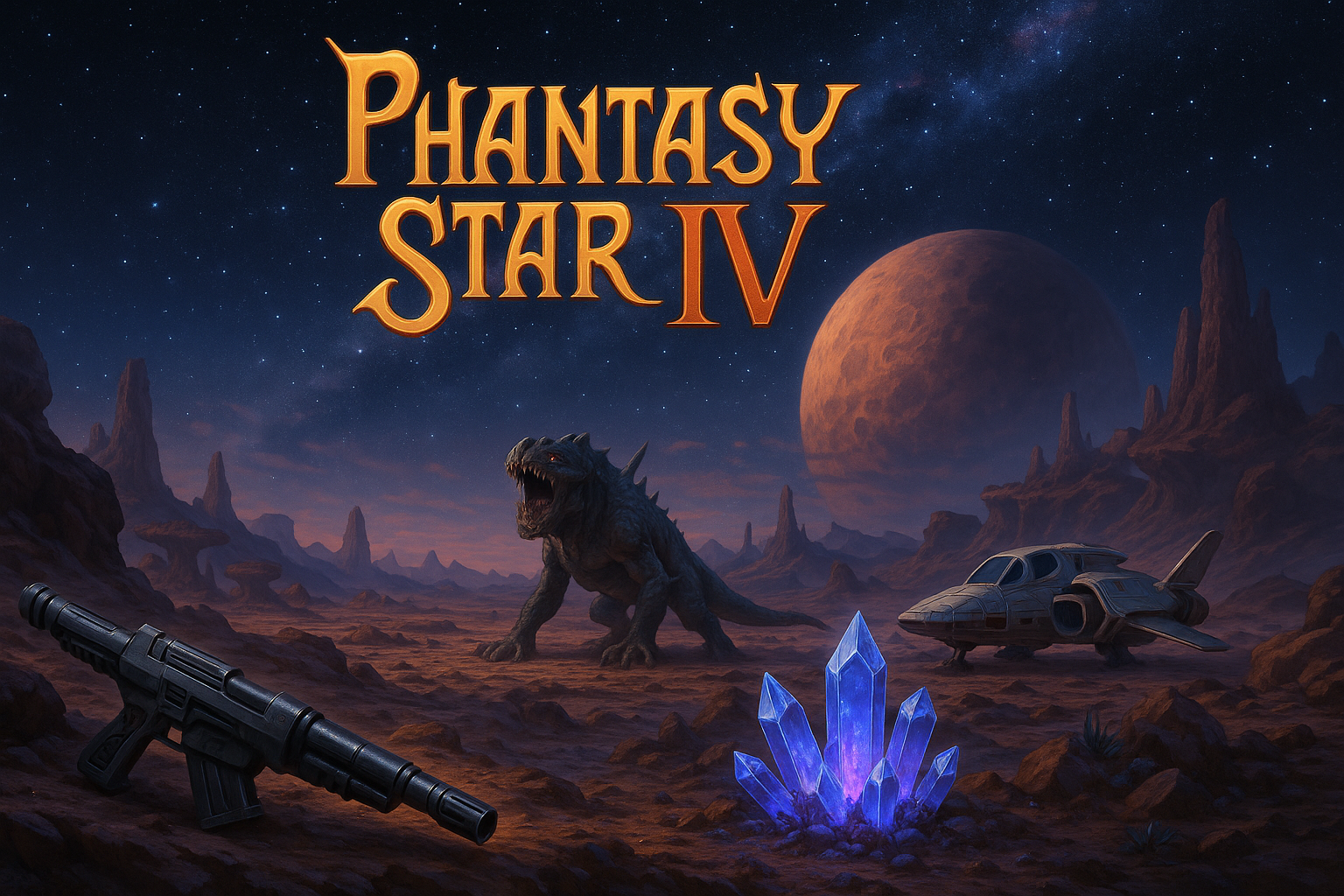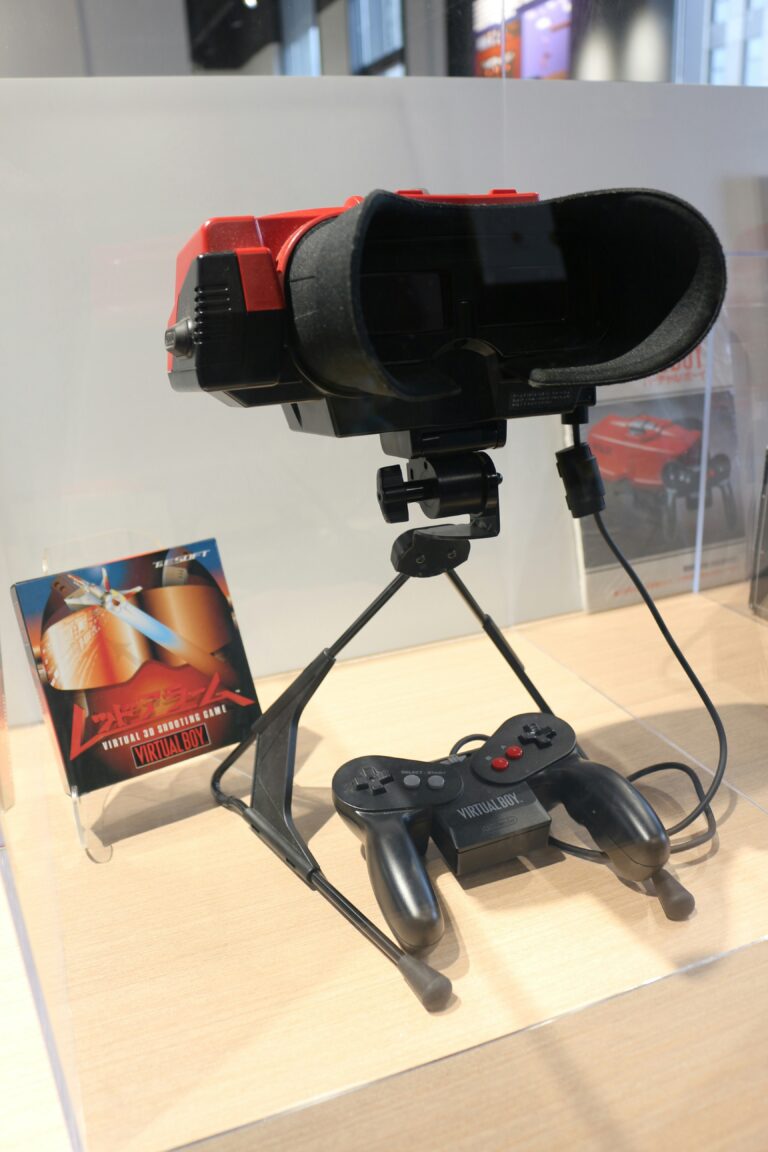In the vast cosmos of video gaming, there exist unsung heroes – titles that, for some reason or another, don’t always bask in the glory they genuinely deserve. One such gem is Phantasy Star IV, the last chapter of the original Phantasy Star series released by Sega in the early 90s. Despite its rich narrative, profound character development, and dynamic gameplay, it didn’t receive the same fanfare as its contemporaries like Final Fantasy or Dragon Quest. However, for those who have had the privilege of traversing through the Algo Star System, they will attest to the enthralling experience that this Sega RPG classic offers. This blog aims to delve deeper into this underrated masterpiece, exploring its roots, analysing its unique features, and offering insights into the captivating world of Phantasy Star IV.
Phantasy Star IV is no ordinary RPG game. Set a millennium after Phantasy Star II, this game captures the essence of what makes an RPG title truly legendary – a compelling storyline, engaging combat mechanics, fascinating characters, and a world that’s as immersive as it is expansive. The game presents a universe filled with awe-inspiring worlds and intricate dungeons, where players can seamlessly transition from poignant narrative moments to high-octane battles. However, to fully appreciate the magic of Phantasy Star IV, we need to dig beneath the surface. We need to understand the nuances of its gameplay, the depth of its plot, and the complexity of its characters. This blog will guide you through these aspects, providing a holistic overview that will make your gaming experience with Phantasy Star IV nothing short of legendary.
By diving deep into Phantasy Star IV, we’re not just exploring a game; we’re uncovering an overlooked piece of gaming history. This Sega classic has not only stood the test of time but also has set high standards in various aspects, from its engaging combat system to its captivating storyline. In this blog, we will dissect the game’s distinct components, looking into how each element contributes to the grandeur of the overall gaming experience. From the game’s innovative “Macro” system that allows you to pre-program your party’s moves, to its unique manga-style cutscenes that add an extra dimension to storytelling, every facet of Phantasy Star IV will be meticulously examined and appreciated.
Phantasy Star IV, despite being a diamond in the rough, continues to be a cherished game for many. This blog is an invitation to embark on a journey that will explore the magic of this Sega RPG classic, dissecting its various facets, and appreciating the level of depth and sophistication it brings to the RPG genre. Whether you’re a seasoned player looking to revisit this classic or a curious novice intrigued by its premise, this deep dive into Phantasy Star IV promises a legendary gaming experience, a journey filled with discoveries, and a fresh appreciation for this underappreciated masterpiece.
Unearthing the Magic of Phantasy Star IV
Over the years, many games have risen to legendary status within the RPG genre. But among these, there is one that, for its time, was groundbreaking and still remains a standout example of game design brilliance, even decades after its release. This game is Phantasy Star IV: The End of the Millennium, a Sega RPG classic that is often overlooked in favor of more mainstream titles. As we delve into the magic of Phantasy Star IV, we will explore its intricate storyline, innovative gameplay mechanics, and the captivating artistry that set it apart from its contemporaries.
The setting of Phantasy Star IV is Algol, a solar system composed of three planets, where a catastrophic event known as the “Great Collapse” occurred a thousand years prior to the start of the game. In a world where technology and magic coexist, your mission as a Hunter is to uncover the mysteries behind a series of unexplained events plaguing the solar system and ultimately, save Algol from the brink of destruction.
What makes Phantasy Star IV a standout game is its innovative blend of gameplay elements. It was among the first RPGs to introduce a ‘Macro’ system, which allows players to preset sequences of attacks and spells that can be executed automatically during battles. This adds an element of strategy that was quite advanced for RPGs of that era. For a more in-depth exploration of the gameplay mechanics, I highly recommend watching “Phantasy Star IV: A Classic RPG” by YouTube channel ‘RPG Archive’.
The Intricate Plot of Phantasy Star IV
One of the most defining aspects of Phantasy Star IV is its compelling narrative. The story revolves around Chaz Ashley, a novice Hunter who, along with his partner Alys Brangwin, is drawn into an epic quest to save their solar system. Along the way, they are joined by a diverse cast of characters, each with their unique abilities and backgrounds, adding depth to the narrative. This rich storyline, filled with unexpected plot twists, emotional moments, and memorable characters, is one of the key elements that elevate Phantasy Star IV above the standard fare of RPGs.
The narrative of Phantasy Star IV is further enriched by its well-crafted dialogue and character interactions. The game makes use of visual comic book-style panels during key scenes, a feature that was quite unique at the time of its release. These panels, coupled with the engaging dialogue, make for a storytelling experience that is immersive and dynamic, capturing the player’s interest from start to finish.
For a detailed analysis of the game’s storyline, check out the video “The Complete History and Making of Phantasy Star IV” by ‘My Life in Gaming’ on YouTube. It’s a thorough breakdown that offers fascinating insights into the game’s narrative design.
Artistry in Phantasy Star IV
Another striking aspect of Phantasy Star IV is its artistry. The game’s visuals, character designs, and environments are not just beautiful, but they also help in building the world of Algol. The diverse landscapes of the three planets, Dezolis, Motavia, and Rykros, each have their distinct aesthetics, reflecting their unique ecologies and cultures.
The monster designs in Phantasy Star IV are some of the most creative in the genre, with each creature presenting its unique challenge and requiring a different strategy to defeat. The battle scenes are dynamic, showcasing the game’s fluid animation and detailed sprite work. From the simple but menacing sand worms of Motavia to the towering, ancient guardians of Rykros, the enemies you encounter are as visually stunning as they are formidable.
Phantasy Star IV’s music is another testament to its artistry. The soundtrack, composed by Izuho ‘Ippo’ Takeuchi, is a mix of energetic battle themes, haunting dungeon tracks, and emotive character pieces that perfectly match the game’s mood and settings. For a taste of this impressive soundtrack, watch “Phantasy Star IV Music Compilation” by ‘TanookiJoe’ on YouTube.
Comparative Analysis of Phantasy Star IV
Comparatively, Phantasy Star IV holds its own against other RPG classics of its time. Let’s take a look at a table that compares Phantasy Star IV with two other popular RPGs of the era, Final Fantasy VI and Chrono Trigger.
| Phantasy Star IV | Final Fantasy VI | Chrono Trigger | |
|---|---|---|---|
| Release Year | 1993 | 1994 | 1995 |
| Platform | Sega Genesis | Super Nintendo | Super Nintendo |
| Setting | Sci-Fi/Fantasy | Steampunk/Fantasy | Time Travel/Fantasy |
| Notable Gameplay Mechanics | Macro System | Active Time Battle | Team Combos |
As you can see, while each game has its unique features, Phantasy Star IV’s innovative Macro system and Sci-Fi/Fantasy setting make it a standout RPG that is well worth exploring.
Why Phantasy Star IV Deserves Your Attention
Phantasy Star IV is more than just another RPG; it is a shining example of what the genre can achieve when innovative game design is coupled with a compelling narrative and captivating artistry. Its unique features, such as the Macro system and the comic book-style cutscenes, add depth to the gameplay and narrative, setting it apart from its contemporaries.
The game’s vibrant world, memorable characters, and intricate plot make for an immersive gaming experience that leaves a lasting impression. Whether you’re a fan of classic RPGs or new to the genre, Phantasy Star IV is a game that should not be missed. Its enduring charm and timeless gameplay make it as enjoyable today as it was over two decades ago.
If you’ve never experienced the magic of Phantasy Star IV, I encourage you to dive into this underrated Sega RPG classic. It’s a legendary gaming experience that promises to captivate and thrill, making it a worthwhile addition to any gamer’s collection.

Conclusion
As we draw the exploration of Phantasy Star IV: The End of the Millennium to a close, it is imperative to reiterate the fascinating elements that make this game a standout classic in the RPG genre. Despite the impressive array of RPGs that have emerged over the years, Phantasy Star IV remains a sterling example of innovation, intricate narrative, and captivating artistry.
The setting of the game in the Algol solar system, composed of three planets with their distinct ecologies and cultures, provides a rich backdrop for the engaging storyline. This storyline, which centers around Chaz Ashley and his epic quest to save the solar system, is further enriched by the diverse characters that join him along the way. The use of comic book-style panels during key scenes adds a unique and immersive touch to the storytelling experience. It is a technique that was ahead of its time, showcasing the game’s innovative spirit.
The gameplay mechanics of Phantasy Star IV are equally impressive, featuring the innovative ‘Macro’ system that allowed players to preset sequences of attacks and spells to be executed automatically during battles. This level of strategy was quite advanced for RPGs of that era and serves as a testament to the game’s forward-thinking design.
The artistry of Phantasy Star IV is another aspect that sets it apart from its contemporaries. The detailed and creative monster designs, diverse landscapes, and the immersive soundtrack composed by Izuho ‘Ippo’ Takeuchi all contribute to creating a vibrant world that is as visually captivating as it is intriguing to explore.
As evidenced in the comparative analysis, Phantasy Star IV holds its own against other RPG classics like Final Fantasy VI and Chrono Trigger, thanks to its unique features like the Macro system and Sci-Fi/Fantasy setting. Its enduring charm and timeless gameplay make it as enjoyable today as it was over two decades ago, and a worthy addition to any gamer’s collection.
In conclusion, Phantasy Star IV is a shining example of what the RPG genre can achieve when innovative game design, compelling narrative, and captivating artistry are fused together. Whether you are a veteran of RPGs or a newcomer to the genre, this game promises an unforgettable gaming experience that will leave a lasting impression. If you haven’t experienced the magic of Phantasy Star IV, I strongly encourage you to dive into this underrated Sega RPG classic.
If you have any thoughts or insights to share about Phantasy Star IV, we would love to hear from you in the comments section. Feel free to share this article with fellow gamers who might appreciate this remarkable RPG. Lastly, if you decide to take on the challenge of saving the Algol solar system in Phantasy Star IV, may your quest be filled with thrilling adventures and epic victories!
For further reading, check out the detailed analysis by ‘My Life in Gaming’ on YouTube [insert link] or explore the impressive soundtrack in the ‘Phantasy Star IV Music Compilation’ by ‘TanookiJoe’ on YouTube [insert link].



